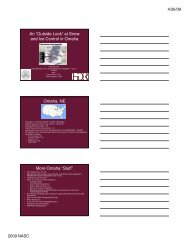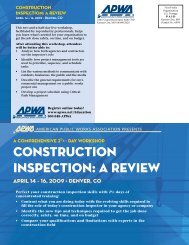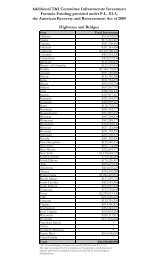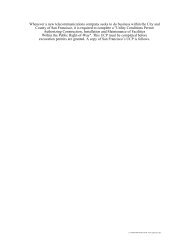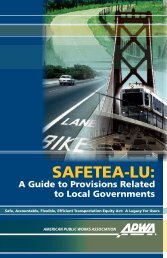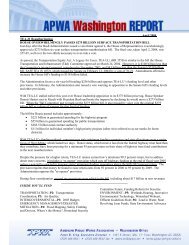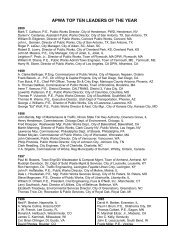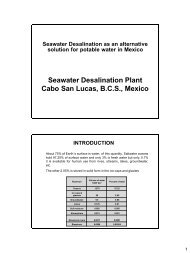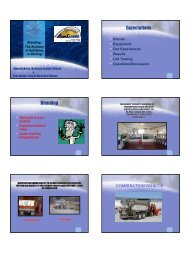Anti-icing & De-icing using a 30:70 ratio of liquid/dry material Topics ...
Anti-icing & De-icing using a 30:70 ratio of liquid/dry material Topics ...
Anti-icing & De-icing using a 30:70 ratio of liquid/dry material Topics ...
- No tags were found...
You also want an ePaper? Increase the reach of your titles
YUMPU automatically turns print PDFs into web optimized ePapers that Google loves.
Transportation Research DivisionEvaluation <strong>of</strong> the Schmidt-STRATOS SpreaderIntroductionIn the fall <strong>of</strong> 2004, the Maine <strong>De</strong>partment <strong>of</strong> Transportation (MAINEDOT) entered into an arrangementwith Schmidt International <strong>of</strong> St.Blasien, Germany to evaluate Schmidt’s STRATOS <strong>material</strong> spreader.The MAINEDOT agreed to evaluate the equipment for one winter season and in turn provide informationand feedback to Schmidt International relative to the <strong>De</strong>partment’s experience with the STRATOSspreader.ScopeThe scope <strong>of</strong> this evaluation included a focus on several features <strong>of</strong> the STRATOS, as well as determiningif the recommended seventy percent granular/thirty percent <strong>liquid</strong> combination was a viable option fortypical storm conditions encountered within the State <strong>of</strong> Maine. Also <strong>of</strong> interest to the manufacturer wasthe ease <strong>of</strong> installation, ease <strong>of</strong> ope<strong>ratio</strong>n and general opinions as to the quality <strong>of</strong> their product.MethodologyThe methodology <strong>of</strong> this evaluation included a relatively straight forward approach; simply subject theSTRATOS spreader to “real world” winter storm conditions experienced by the MAINEDOT anddocument the results.AnalysisUtilizing <strong>material</strong> usage information developed by an inventory tracking system, comparisons were madein an effort to determine if <strong>material</strong> savings were present while <strong>using</strong> the STRATOS spreader.Unfortunately, the precision <strong>of</strong> the data collected for inventory purposes is not accurate enough to makean absolute comparison with the standard spreader typically operated by the MAINEDOT. Comparisonswere made nonetheless <strong>using</strong> the available information.About the STRATOS SpreaderOne <strong>of</strong> the potential advantages to <strong>using</strong> the STRATOS spreader is the ability to pre-treat the granular saltwith a significantly higher amount <strong>of</strong> <strong>liquid</strong> <strong>material</strong>. MAINEDOT’s conventional spreaders are limited toa maximum rate <strong>of</strong> 10 gallons <strong>of</strong> <strong>liquid</strong> <strong>material</strong> per ton <strong>of</strong> granular <strong>material</strong>. The STRATOS machine iscapable <strong>of</strong> applying approximately 55 to 60 gallons per ton <strong>of</strong> granular <strong>material</strong>. This additional <strong>liquid</strong>,coupled with the granular salt, creates an end product that has the consistency <strong>of</strong> slurry. This slurryappears to stay in the travel lane much better than the granular salt treated with minimal <strong>liquid</strong>.It is important to note that the MAINEDOT is currently <strong>using</strong> a salt with large particle size. To bestachieve the desired slurry consistency, the <strong>De</strong>partment should continue to pursue the possibility <strong>of</strong>procuring a much finer salt for use with the STRATOS equipment.1



